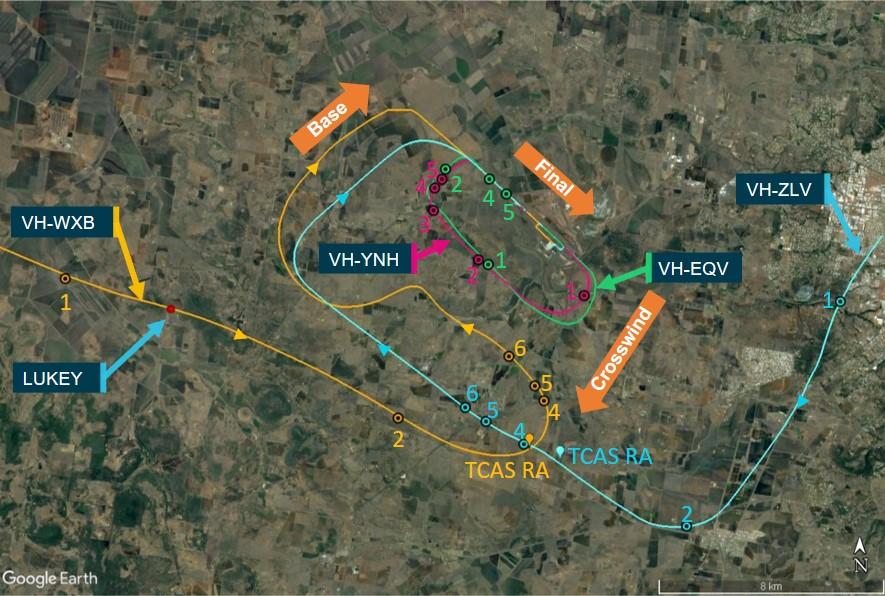
An incorrect position broadcast and not effectively monitoring radio calls contributed to the pilots of a King Air and Saab 340 misunderstanding the positions of the other aircraft, which led to non-standard manoeuvring before both aircraft received TCAS alerts in the circuit at Wellcamp Airport, an Australian Transport Safety Bureau investigation details.
On the morning of 21 October 2021, a Saab 340 was approaching Wellcamp, near Toowoomba, on a scheduled passenger flight from Brisbane, with two flight crew, one cabin crew, and nine passengers on board.
A Beechcraft King Air was also approaching Wellcamp, having earlier departed Roma on a charter flight with a pilot and eight passengers on board.
Approaching the circuit, the Saab flight crew announced an incorrect position on the Common Traffic Advisory Frequency (CTAF).
The ATSB found this incorrect call probably resulted in the pilot of the King Air misidentifying the Saab as another aircraft in the circuit.
“The flight crew of the Saab did not then effectively monitor the radio, resulting in them having an incorrect mental model of the King Air’s position, and not perceiving it as a threat,” ATSB Director Transport Safety Stuart Macleod said.
The pilot of the King Air then manoeuvred their aircraft opposite to the circuit traffic direction while descending into the active side of the circuit, in the vicinity of the airport, believing this manoeuvre would aid in sequencing.
“Both flight crews were unaware of the distance closing between them and, as the aircraft came closer together, both were issued traffic advisories from their traffic alert and collision avoidance system (TCAS),” Mr Macleod explained.
The Saab flight crew, who were also issued with a resolution advisory from their TCAS, followed this advisory and climbed until they were clear of conflict.
During the occurrence, separation between the aircraft reduced to 300 ft vertically and 1,000 m horizontally.
“The airspace above Wellcamp is non-controlled, with pilots responsible for self-separating,” Mr Macleod said. “It can often be busy, with a mixture of general aviation, charter, and regular public transport flights like the one the Saab was operating in this incident.
“One of the priorities of the ATSB’s SafetyWatch initiative is safety around non-controlled aerodromes, where insufficient communication between pilots is the most common cause of safety incidents like this one.
“In this case, the pilots of both aircraft had an incorrect mental model of each other’s position, and neither had positively sighted the other aircraft. The last line of defence was the TCAS, which prevented a potential collision.”
The ATSB’s final report advises pilots to use sound judgement, and to follow standard procedures and CASA guidance.
“Using standard procedures at non-towered aerodromes – unless otherwise stated in the En Route Supplement Australia – assists pilots in maintaining situational awareness and separation from other aircraft,” Mr Macleod said.
In addition, the report notes the value, demonstrated by this occurrence, of systems in addition to radio communications, such as ADS-B and TCAS.
“These additional systems serve as a valuable source of information to assist pilots’ situational awareness and decision making,” Mr Macleod concluded.
Read the report: Separation issue involving Saab 340B, VH-ZLV and Beech Aircraft B200, VH-WXB, Brisbane West Wellcamp Airport, Queensland on 21 October 2021


